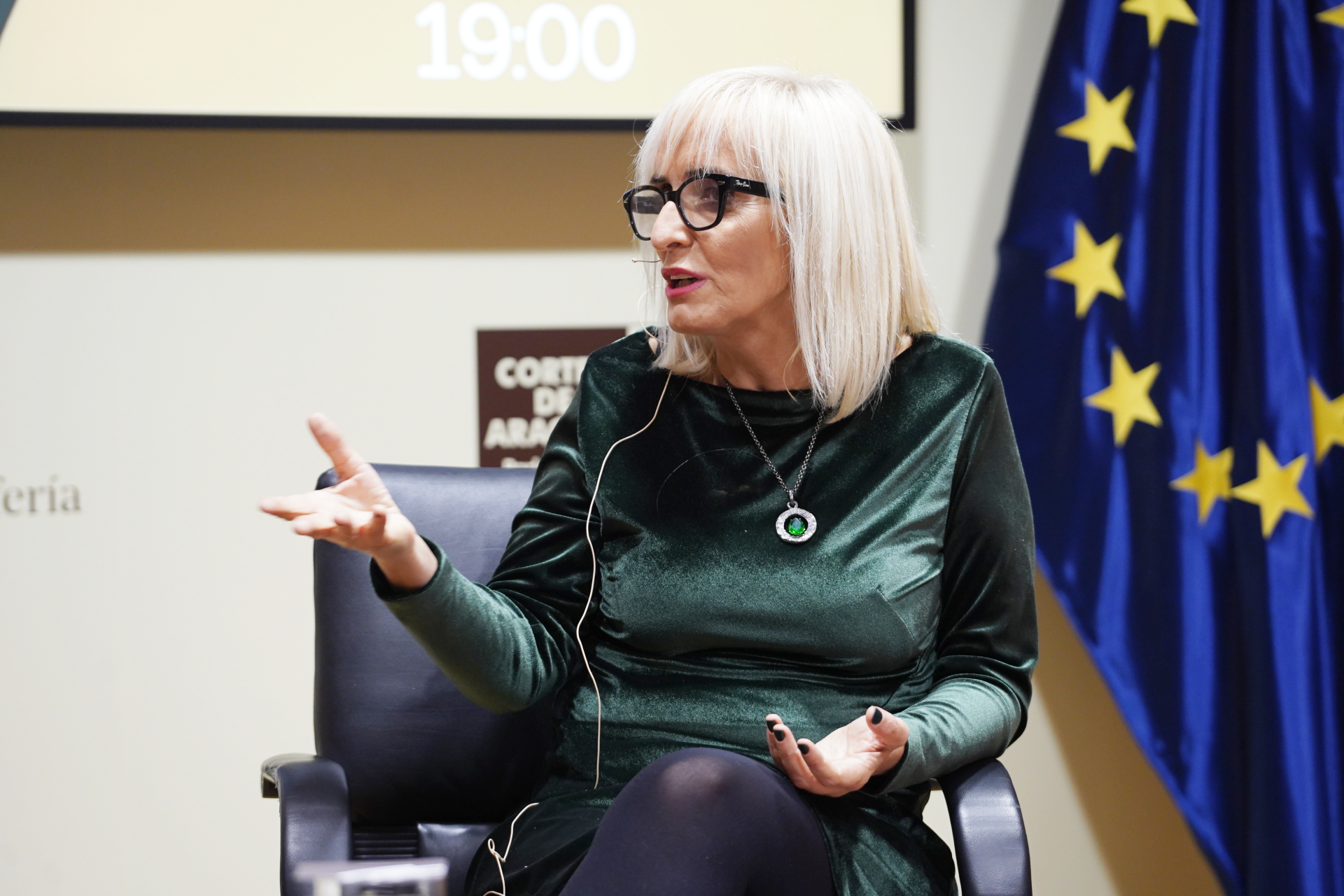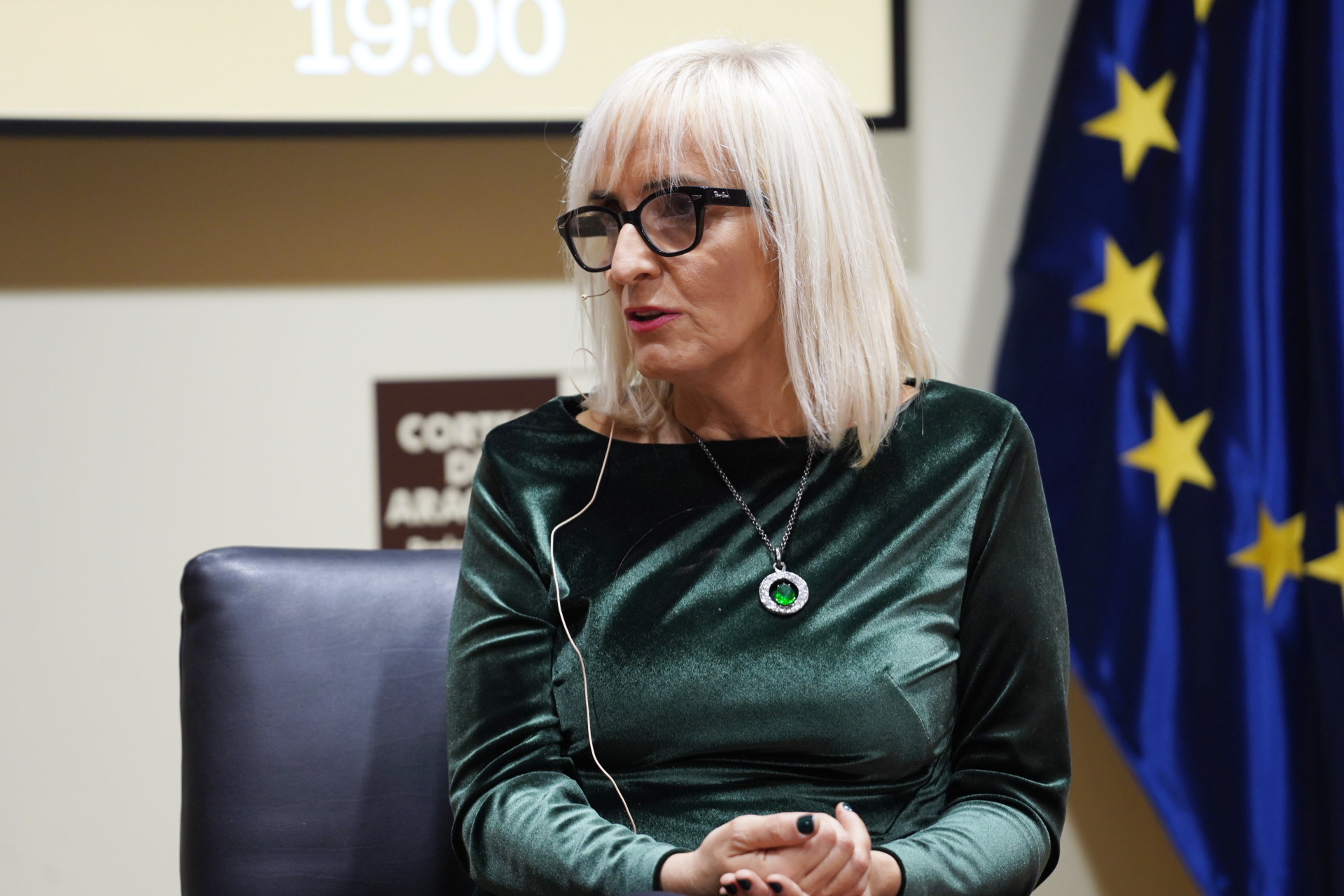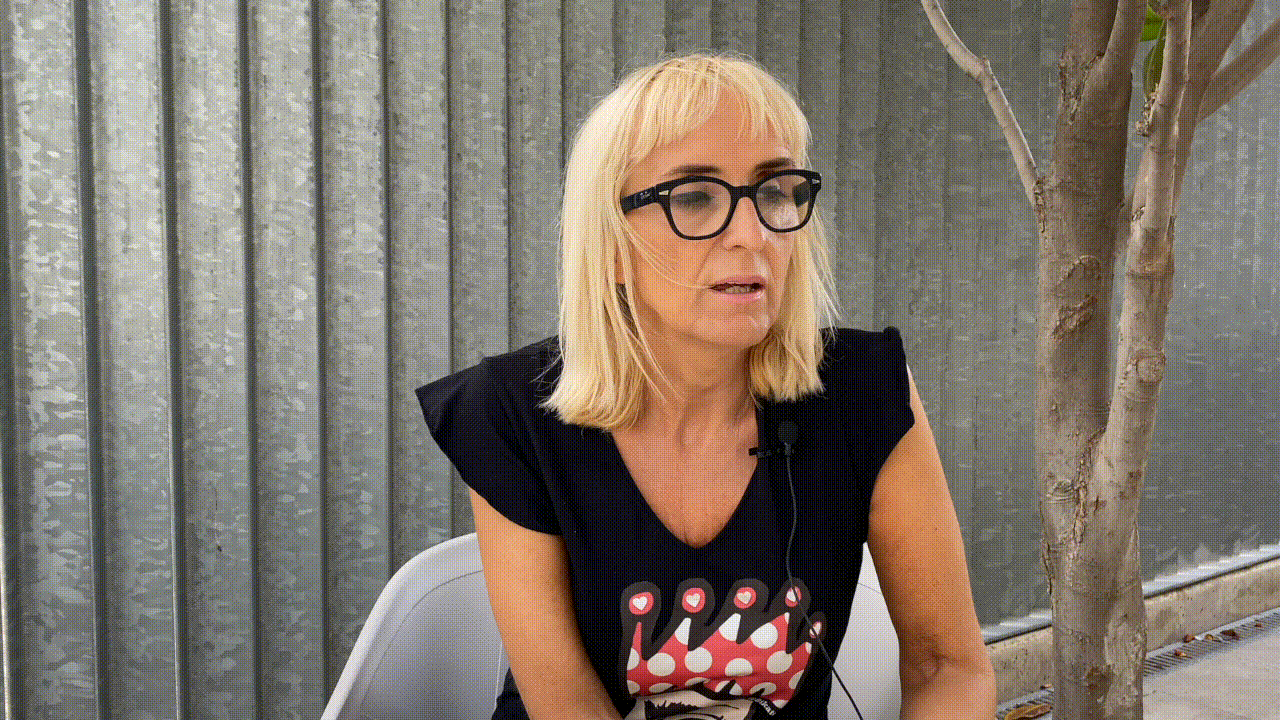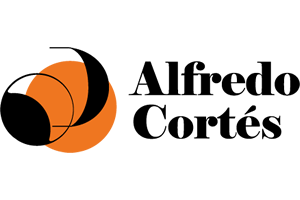In June you participated in the European Storytelling Festival in Croatia, how was the experience?
Very enriching and exciting. There were a lot of authors from various countries and a very pleasant atmosphere was created. They prepared it very well because it was a meeting that combined fun with cultural activities, there were readings in public in different places, in two cities: in Zagreb and in Zadar, which is a coastal city, and they also organized all kinds of interviews, colloquiums with university professors specializing in the genre and it was very flattering to be able to be there.

The short story is a genre with great acceptance in many countries, do you think that in Spain it is also having a pull?
I think that, commercially, it continues to be the little brother of the novel, which is trailing behind. But I think that from the point of view of academic consideration above all, of the treatment given to it in the university environment, it is a very important genre. There are few genres so studied and so well broken down from the point of view of technique, of themes. There is a lot of research, for example, on the feminist side of the story.
There are many studies now that talk about women storytellers who put a wedge or who try to make that vision of the world in which women still continue to be a kind of victim appear on many occasions. Without complaints or laments, but as a denunciation of a reality that must be fought.
Your work has been studied in different parts of the world, there are reading clubs around your books and you have participated in anthologies also in Latin America. How do you live this universality of your work?
With much gratitude, very happy because it is something very nice and very surprising too. The Croatian professor who invited me [to the European Storytelling Festival] was precisely because she had heard about the stories I write in a congress and it is interesting to see how they show a willingness to integrate any type of literature or author who may have something to say. It is something very nice and representative of the global movement that is being experienced of vindication of what we female authors have to say.
Although you have also written novels, your work is marked by short stories and micro-stories. What do you like most about these genres as a writer and as a reader?
I find it very interesting from the point of view of reading, which I think is how you have to start: I was above all a reader of short stories before getting into the kitchen and cooking my own. I find it very interesting the challenge of telling a story when you have so little space and you have to get the reader to immerse himself in that world that is created between the two silences, the one before reading and the one after. I find it very mysterious that you can achieve that with a few words and a few characters, that you can make someone go live in a story.
That’s what happened to me with the authors I was interested in and that’s what drove me to write. I always say that we write out of envy because we have envied someone to the point of delirium and we would like to have written before them what we have liked so much, what we have discovered thanks to their work.
As a writer it is always a challenge. In a novel it is not so important perhaps that a paragraph is over, it can go more unnoticed, or that a scene is not sufficiently well concluded. In a story it is very complex that something may be left over and that the reader is interested if there is really something that is not in its place.
Who are your favorite women writers?
There are many women authors. I am especially interested in authors who have dealt with the situation of women. We have been reading male authors for centuries, I am devoted to them, I love them and I have nothing against them, but I find it very interesting that this way of being in the world, which means being a woman, is being vindicated and I am very interested in the problems, above all, of the life traditionally assigned to women without them having the possibility of choosing it.
I am especially interested in the women who have worked on this perspective, who have shown us what life was like for a human being who is almost doomed to be a mother, to have social and economic conditioning factors and a lack of freedom. Especially women who have dealt with the theme of the house as a cage. I am very interested in Shirley Jackson, who deals with the theme of the house as a cage in which a woman is imprisoned.
I am very interested in Silvina Ocampo, I think she is an author who has yet to be fully discovered although she already has a long trajectory of scholars who have approached her work, it seems to me that she is an author to whom we must always return because she is somewhat overshadowed by the link with her husband, Bioy Casares, and with their friend, Borges. So it is the side of a triangle that has been somewhat overshadowed.
I am very interested in Ana María Matute and almost all the authors who have dealt with everyday life from a disturbing point of view, showing the shadows it can have.

Your latest work, ‘Ni aquí ni en ningún otro lugar’, is a sort of reinterpretation of classic stories. What do these stories have to disturb us and make us like them even as adults?
They have the power to take you with them from the time we are very young. I may have forgotten a novel I read last week but I remember perfectly well when my mother used to tell me Snow White while she was trying to get me to eat the liver the doctor prescribed. I remember a suspension of real life being created when she was telling me that story. And I think that is what we are really passionate about: that wrapped in a very beautiful, very wonderful world, at the end they are talking to us about what the human being is, death, cruelty, betrayal, love, love beyond death. I believe that those teachings with that wonderful world, those images, that rhythm seduce and conquer us and make that no one can escape the charm of a story.
The monstrous usually appears in your stories, although always with compassion towards that misunderstood being, depository of all the evils and fears of a society. What do you like most about the monstrous as a literary theme?
I like the denunciation that through the monster can be made of an exclusionary look. I think the monster is someone who comes in handy, in societies we always have to have a monster, a creature that makes us feel normal. To me that look of the “we” that confronts the other, which is the monster, seems to me totally brutal. It seems to me a form of condemnation, of marginalization that is changing, something that I am also passionate about.
Throughout time we look for the corresponding monster, it can be the foreigner, it can be the person who is of another religion, who is born with a physical deformity, it can be the woman in a certain society, but we always end up finding it.
I believe that the monster is really in the eyes of the beholder, not in the creature turned into a monster by others.
In your work we find terror in the middle of a forest but also in everyday scenarios. How can we perceive uneasiness and terror in everyday life?
I found it thanks to authors. Hitchcock is an inexcusable reference, he and by extension Patricia Highsmith who was an author of the terror of our kitchen, our bathroom and our bedroom.
With Hitchcock I discovered that you can be very afraid of the shower in which you bathe every day, where anything can happen to you. Or if there is a knife on top of a kitchen table, which is the knife with which you cut your food every day, it can become a lethal weapon.
I think of many Hitchcock films, in ‘The Rope’ in that chest inside which there is a corpse and there are two friends who are talking as if nothing happened. And I think that’s the fear that we really dread. Ghosts, vampires, zombies, we have them so stereotyped that they have reached a point where they have lost that capacity of strangeness. But we can be very scared of someone who is part of our environment and suddenly becomes a fierce stranger and I think that’s achieved with everyday elements. You can’t trust the terrifying effect to a spectral apparition or to a man who comes out of the dead in the cemetery: your best friend, your partner, your charming neighbor can scare you a lot and that seems to me to be even more effective.
Being even more specific, in your stories we also find terror or specific situations that affect women. Is it important for you to include the gender perspective or feminism in your stories?
I have never done it intentionally, but it has always seeped in. I look back and I realize that in ‘A Doll’s House’, which is a 2012 book, there was already a very marked awareness of what it means to be a woman and all the good and bad things that can bring you that.
From a literary point of view I think it is very important to reflect the world we live in. Not with a spirit of complaint and lamentation but of information and denunciation, I think it is the way to reflect the world in which we live, the society that has touched us with its lights and shadows and I think it has never been a conscious decision, “I’m going to write a book of feminist micro-stories”. But then over time I have been checking and there are many studies on ‘Casa de muñecas’ that have gone in that line of studying the feminist side of many of the texts that are short but that talk about women as dolls, the dolls themselves as models that have been awarded to the girls who have then become women, well, certain physical and even behavioral limits and that is very important.
You usually bet on the creation of beauty through language.
In the end, language is the voice that counts. I always say that there are four or five themes that interest us since we stopped being little monkeys and started to think and enjoy beauty and reflection. The themes are four, but the voices are many. You can sharpen your voice, you can modulate it thanks to language and for me it is a wonderful instrument, I never get tired of working with it, of suffering with it when a phrase does not end up looking the way you want it to, when you do not find the exact word that comes to you but you do not end up catching it.
It seems to me that it is a real miracle that we have been able to find that way of expressing ourselves and it is an absolute passion for language as a working instrument, as a material, as clay that helps you to tell the story.

In your work there are places, such as houses or castles, that take center stage. Where does this interest in space as a character come from?
I really like things and spaces that define their owners. I think that through the objects and places where they live we could almost make an x-ray without making a mistake. I think that a choice of an object, of a specific type of fountain pen, of wallpaper defines very well who uses the pen or who lives in that house.
I think houses in particular are living places. For me, who works a lot on atmospheres, it is very important to see the place where the stories are going to happen, I think they are accomplices whom we cannot despise.
Anyone who has seen ‘Rebecca’ remembers how alive Manderley was, how it was an atrocious and very negative presence towards the newcomer. That house that still seems to be waiting for the dead mistress. I always think of Manderley as a kind of pet of a ghost, a faithful dog awaiting Rebecca’s arrival.
It seems to me that houses define us and you can give a very specific tone to a story or a novel if you have the headquarters, the setting, the place where your creatures will appear little by little and I give it a lot of value because it seems to me that the narrative value you can give it should not be underestimated.
“THERE ARE FEW GENRES AS STUDIED AS THE SHORT STORY”.
You are not an author who looks for the happy ending at all costs. Is moving away from it a way of showing that beauty is not only found in the beautiful and luminous?
I think there is nothing more realistic than accepting that there are many sad endings in life. It’s not that I particularly like them but I do believe that some stories cannot have a happy ending, that it would not be the one it deserves and the one you can really expect as a spectator or as a reader.
It really unnerves me when a happy ending is forced, when I go to the cinema and I realize that they have been about to give it another twist, another ending and that the commercial mode has won, the feeling that if you don’t give an audience a reassuring ending they won’t come back to see a film of yours. It seems to me that it’s a kind of prostitution of the work. If we really want to tell about the world we live in, we don’t have to avoid the negative aspects that are there, as well as the positive ones.
There are times when I prefer to give an open ending rather than a forced happy ending and I like readers to think and to be left searching for the answers to the questions posed by an ending that may not be completely closed. There are others that have to be sad, especially if I am inspired by real life and by something that has impressed me, precisely because of how terrible it was. Rarely do I choose poetic justice, taking revenge on reality by giving them a happy ending. Sometimes I have done it, but it is a kind of therapy.
Rosa Montero said that one writes about one’s own obsessions or to understand them. What obsesses you or what drives you to write?
For me, above all the complexity of the human being. I think that’s the basic theme. And it’s true, we always write about the same topics looking for variations. For me that is a theme that never runs out: how complex we are, the strange mixture of light and shadow that in the end is a human being, how we are capable of the best and the worst, how sometimes a kind of negative demon takes possession of us and makes us act in a cruel, unjust way… those are the themes that interest me.
Also the theme of the helplessness that creates, precisely, that negative side. I am very interested in the victims, the people who lose out from the decisions of others. There are always those two sides or poles of the human being: on the one hand, the one who is cruel, brutal and unjust and the being who receives the side effects of that behavior.
A few months ago you started the podcast ‘Erlés in noir’ where you analyze real crimes. How has this experience been? How is it helping you with your work as a writer?
For me it is very rewarding because I have a great time because I am passionate about crimes, precisely because they show you live and in a very realistic way what we human beings are capable of. I have a great time looking for the stories and telling them almost as if they were literary pieces.
For me it is very important to analyze what leads someone to do something like killing a child. There are all kinds of stories, there are Spanish crimes, North American crimes, which seem to be ahead of us in this, European crimes. I find it very interesting to see how a child can become the poisoner of her siblings, as happened in Murcia. What drives someone to behave like that? I think it’s terrible but fascinating at the same time.
How does literature help to face life?
Well, it seems to me that it is the best life jacket we can get hold of. In my case. There are people who I imagine would choose the vest of music, cinema or any other kind of artistic discipline. Art helps us because it is a way to escape from reality, even if you tell it from there, even if you move and make a parenthesis that is not entirely real.
For me art is a consolation, to find in literature the way to escape from the worst, from the saddest and most sordid that human beings have and somehow turn it into a literary piece. It helps me every day to read others and to write. I think it is a very soothing training.
















